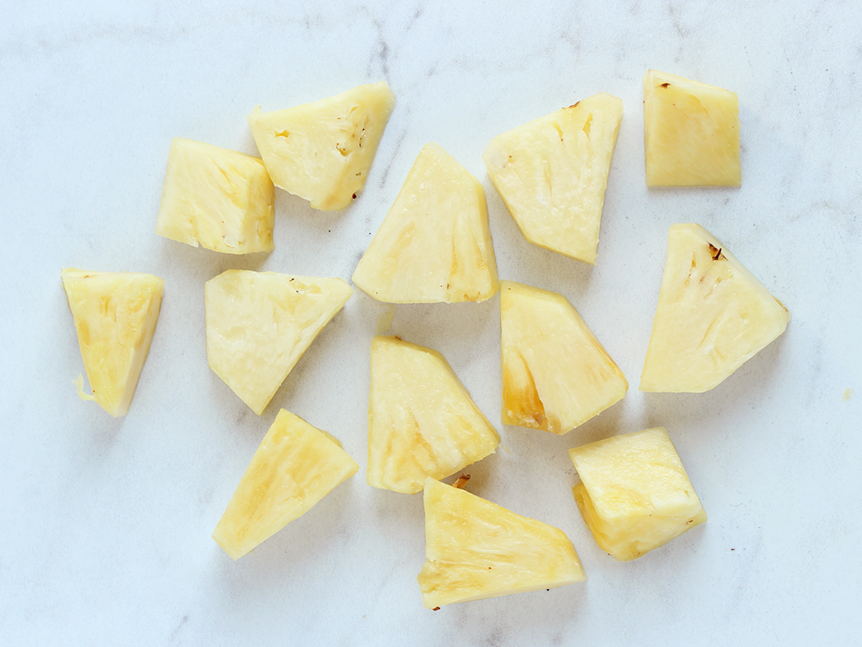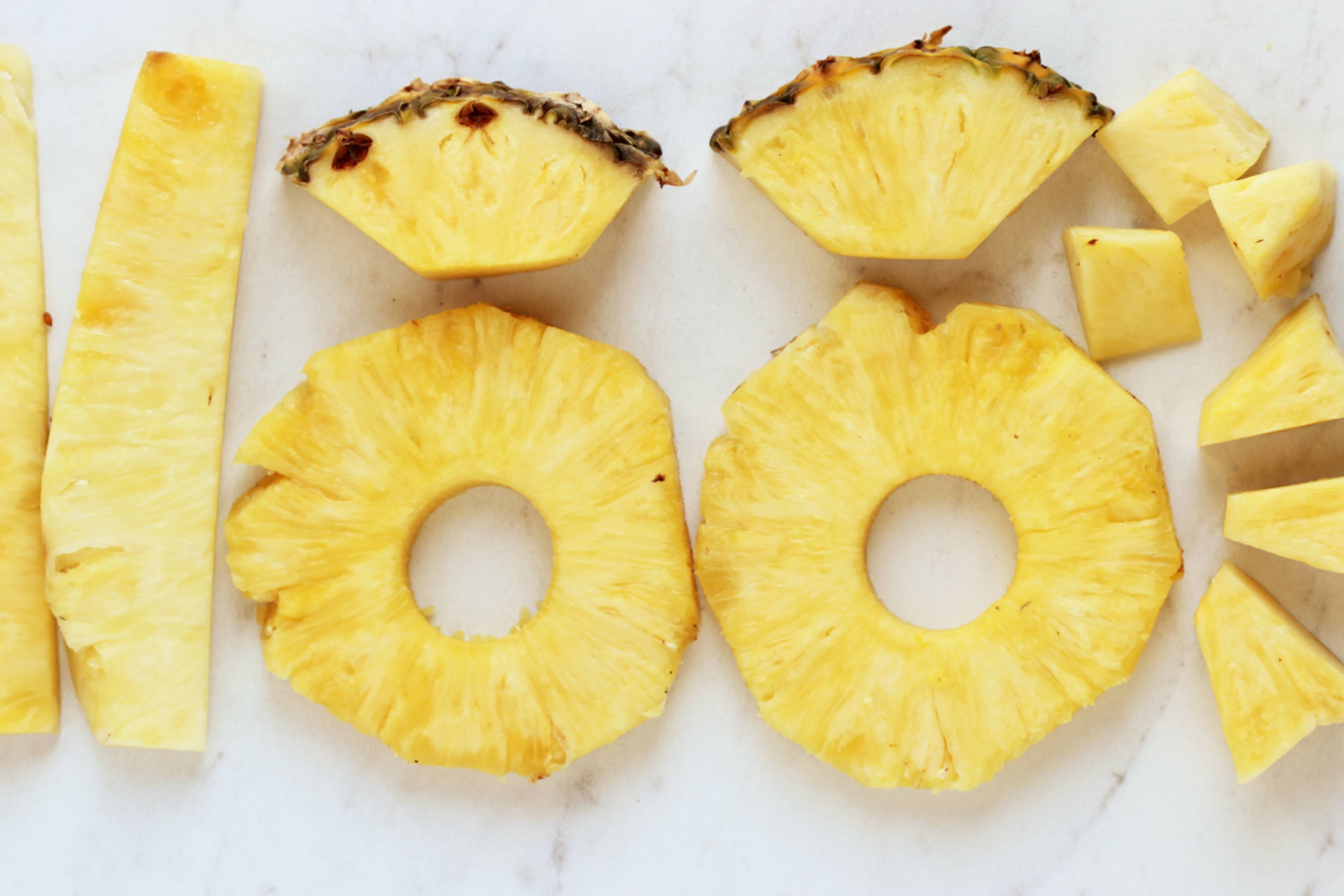10 Pineapple Facts Most People Don't Know
Do you know where putting pineapple on pizza was invented? Learn this and nine other fun pineapple facts.
Dec 07, 2021
The pineapple is an incredibly versatile food: mouthwatering on its own and equally at home when added to savory main courses or luscious desserts. Everyone knows its iconic pine cone shape, tough rind, and distinctive sweet yet tart flavor. The word pineapple in English was recorded in 1398, when it was originally used to describe the reproductive organs of conifer trees. Yet, it got its name from the word "ananas," which means "excellent fruit" in Tupi — an extinct language from South America. Despite it being around for over 600 years, this tropical export has managed to retain an air of mystery. Here are 10 fun pineapple facts!
1. It's not from where you might think
Although most people think of Hawaii when they think of pineapple, the state was a hub for pineapple production for only a limited time during the 20th century. According to Smithsonian, the pineapple originated "in the region where Argentina, Paraguay, and Brazil meet." And although American companies did ramp up domestic pineapple production in Hawaii from around 1900 to 1960 as people in the U.S. first became familiar with the fruit, today just over 10% of the pineapple consumed in the U.S. comes from the Aloha State. Thanks to improved transportation networks and refrigeration, most pineapple instead comes from Costa Rica, the Philippines, Indonesia, and Brazil.
2. It's slowly becoming one of America's favorite fruit
Although it has yet to reach the popularity and ubiquity of bananas and apples, America’s passion for pineapples continues to grow. According to commodity-tracking company McKeany-Flavell, the average American consumes around 8 pounds of fresh pineapple each year, plus 2 pounds of canned pineapple — and that’s not including pineapple juice, dried pineapple, or other products that contain pineapple such as certain baked goods.
3. It likes to play the long game
It can take up to three years for a pineapple plant to fully mature before it begins bearing fruit. And each individual pineapple can take an additional year to grow from a blossom to something that’s ripe and you can eat. While pineapple plants can grow only one fruit at a time, they do at least have a long lifespan — some live up to 50 years, producing 50 individual pineapples over that period.
4. It's ripe for the picking
Unlike with tomatoes or strawberries or other fruits that change color as they ripen, the tint of a pineapple’s skin means absolutely nothing about how ripe it is once you cut inside. Instead, pineapple purveyor Dole says you can judge the ripeness of a pineapple by looking at the fruit's individual spikes. "The flatter the skin, the riper the fruit," the company says.
5. It's just what the doctor ordered
The tropical fruit has been used for centuries to ease digestion, among other ailments. It contains high levels of a naturally occurring enzyme called bromelain, which is used today to treat inflammation from burns, wounds, and other injuries.

6. It does not mix well with dairy
Scientific American conducted an experiment with pineapples and milk. It found that the proteolytic enzyme in bromelain can break down proteins like casein in dairy products, making them taste bitter. The longer the two are exposed, the worse the effect becomes. Translation: bad news if you’re trying to use fresh pineapple with cream cheese, whipped cream, or non-dairy-based desserts. If you do want to mix pineapple with dairy, be sure to eat the dish as soon as possible to lessen the chance of bitter flavors developing.
7. It makes for great houseplants
Really! According to the expert gardeners at HGTV, you can turn a pineapple into a houseplant by first removing that spiky green crown: Twist it off in one steady motion — similar to the way you’d wring out a wet towel. Once the top is removed, let it dry out and “cure” for several days; do not immediately place it in water, since unlike with other plant cuttings, your goal isn’t to grow roots right away. Next, remove the bottom few leaves from around the base of the crown so you are left with only the stem. Fill a large pot with good quality soil, dig a small hole in the center, and then plant the pineapple top. And that’s it! Place the pot in an area that gets a good amount of sunlight, water the top regularly, and your new pineapple plant should have no problem taking root — in about two months — and growing into a healthy new plant.

8. It was once considered a signifier of opulence and wealth
Christopher Columbus has been attributed with first bringing pineapples from Guadeloupe to Europe in the 1490s following his treks abroad. The fruit was an immediate hit with Spain’s monarchs and became very much in demand. By the 17th century, pineapples began to increase in availability, but only for the very wealthy — folks like Louis XV, Catherine the Great, and Charles II. As late as the 1700s, pineapples imported from the Caribbean islands could fetch incredible prices, sometimes going for the equivalent of $8,000 in today’s dollars.9. It's also a sign of hospitality
Because of their incredible value — and as more and more people became able to afford pineapples over time — they were often used as the centerpiece for large meals and celebrations. You could even rent them for a night if you couldn’t afford to purchase your own fruit. In the early 1900s, people also started to bring pineapples to the homes of friends and family members as a sign of love and hospitality. It was this custom that also ultimately led to pineapples becoming a common home-decorating motif, appearing as wood carvings, being painted on bowls and dishes, and being featured prominently in artwork — a tradition that continues today.
10. It's a very contentious pizza topping
Although it’s a beloved ingredient in cocktails, charred on the grill, diced in salads, or mixed in Chinese food, one of the most popular — and notorious — uses for pineapple is on Hawaiian-style pizza. And you might be surprised to hear that that idea didn’t originate on any island. Instead, it actually began in the small Canadian town of Chatham, Ontario. According to BBC News, Greek-born pizzeria operator Sam Panopoulos was making a pizza one day back in 1962 and decided to throw some pineapple on top of it for fun, to “see how it was going to taste.” The experiment exploded in popularity, spreading from Canada to the U.S. and then rocketing around the world, making pineapple (along with anchovies) one of the most controversial toppings you can place atop America’s favorite food.
.svg?q=70&width=384&auto=webp)







